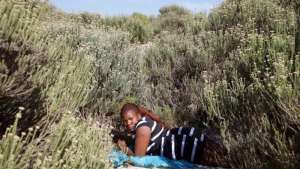From the Series
China’s influence in Africa is growing rapidly on many levels: politically, economically and even military. This increasing Chinese sway has an urban component: all across the continent, Chinese companies are creating new highways, light rail systems, Special Economic Zones, and mass housing developments, tapping into the fact that Africa is urbanising rapidly. Cities have brand new skylines “made in China”, designed by Chinese architecture firms, developed by Chinese real estate firms, financed by Chinese banks, and built by Chinese contractors, with materials sourced directly from China.
A new exhibition at New York’s Storefront for Art and Architecture, called Facing East: Chinese Urbanism in Africa, investigates the impact of Chinese development on fast-growing African cities. It is curated by journalist Michiel Hulshof and architect Daan Roggeveen, the Dutch duo behind the well-known Go West Project.
Facing East is built around personal stories of individuals involved in the urbanisation process, some of them told through striking photographs taken by Hulshof and Roggeveen.
Hulshof is a partner at Tertium, an urban research and strategy bureau in Amsterdam. He has worked as a China correspondent for several Dutch and international media outlets. Roggeveen is an architect and co-founder of MORE Architecture, a studio for architecture and research based in Shanghai.
They collaborated on the Go West Project, a think tank on emerging megacities. They are also the authors of How the City Moved to Mr Sun – China’s New Megacities (SUN, 2011). They lecture and publish frequently in Europe, the US, and Asia.
The two have travelled to six African cities, from Accra to Addis Ababa to Kigali, in order to research the Chinese impact that exists on the ground. They interviewed over a hundred Chinese and African architects, politicians, entrepreneurs, journalists, students, developers and artists who are involved in or touched by Africa’s rapid process of urbanisation.
“China’s influence in Africa often goes even further than what we perceive through the lens of the built environment,” they say. “China’s state-owned CCTV Africa is broadcasting throughout the continent, and many African capitals have Confucius Institutes, in which an increasing number of African students are learning Mandarin Chinese.”
Facing East allows visitors to experience the fascinating consequences of shifts in geopolitical power from the perspectives of those living it. Visitor find themselves in the same unstable position as Hulshof and Roggeveen during their research trips, and are forced to make associations between narratives, navigate existing and new relationships, and attempt to tie these together to comprehend the next chapter of globalisation: one in which many African cities are beginning to face eastward...
Facing East is at Storefront for Art and Architecture until 1 August.













